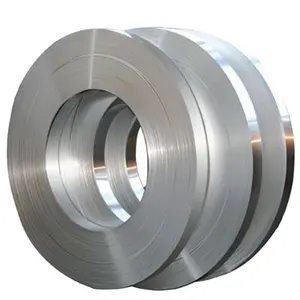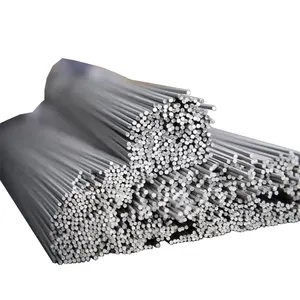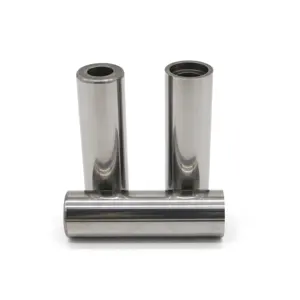Popular in your industry





















































































































































































Top categories
About ring magnets
Introduction
Unlock the power of ring magnets with our comprehensive guide. Ring magnets, characterized by their central hole, are versatile and come in various types, each with unique properties and applications. From their basic structure to their complex magnetic properties, we delve into the world of these fascinating magnets. We explore their practical applications in diverse fields such as electronics, healthcare, industrial machinery, and renewable energy systems. Additionally, we provide insights into best practices for using and optimizing the performance of these magnets. This guide is designed to help you understand and harness the full potential of ring magnets.
Understanding Ring Magnets: Basics and Properties
Ring magnets are unique magnets characterized by a central hole. They can be simple magnets with a plain hole or have additional features like countersunk, counter-bored, or threaded holes. These magnets can be magnetized in two ways: with their north and south pole on opposite circular faces or diametrically magnetized, where the north pole is on one curved side and the south pole is on the opposite curved side. Regular countersunk magnets can have either pole on the countersunk face, while pot magnets with a countersunk, counterbore, or threaded hole are magnetized on one side only.
Types of Ring Magnets
Ring magnets come in various types, primarily distinguished by their material composition. We carry a large inventory of permanent rare earth and ceramic ring magnets. Neodymium ring magnets, a type of rare earth magnet, come in grades ranging from N30 to N35. Additionally, Grade 5 ceramic ring magnets are available. These types of ring magnets differ in strength, durability, and resistance to demagnetization, making them suitable for different applications.
Physical and Magnetic Properties of Ring Magnets
Ring magnets are flat, circular, and have a hole in the center. Their unique polarization allows the north and south poles to be segmented in various ways, alternating around the ring. This can be in halves, quarters, or even eighths. Despite having less magnetic volume due to their hollow center, they are versatile and can easily slide onto rods and tubes. Neodymium ring magnets come in grades ranging from N30 to N35, and Grade 5 ceramic ring magnets are also available.
Unlocking the Power: Practical Applications of Ring Magnets
Ring magnets, particularly neodymium rings, are powerful and versatile, finding use in various applications. They are integral to loudspeakers, stereo systems, motors, sensors, and generators, especially in high-tech industries and critical environments like hospitals. In healthcare, ring magnets can neutralize malfunctioning implantable cardioverter-defibrillators, potentially saving lives. They also find use in educational demonstrations, illustrating magnetic forces to students. Depending on the application, less powerful and more affordable options like ceramic and alnico magnets are also used.
In Electronics and Telecommunications
Neodymium ring magnets, a type of NdFeB magnets, play a crucial role in the communication industry. They are integral to microwave communication technology, including radar technology, satellite communication, remote control, and telemetry technology. These magnets also find applications in electronic tracking and countermeasures technology. Additionally, they are used in devices like the magnetron, magnetron traveling wave tube, cathode ray tube, and circulator. Their use extends to telephone systems, where they replace mechanical off-hook switches, enhancing durability and resistance to environmental impacts.
In Medical Devices and Healthcare
Ring magnets play a crucial role in healthcare, particularly in hospitals. They are used to neutralize malfunctioning implantable cardioverter-defibrillators (ICDs), potentially saving patients' lives. When an ICD malfunctions, it delivers an inappropriate number of shocks, which can lead to patient injury or even death. In these situations, applying a ring magnet to a patient’s chest corrects this malfunction, providing a life-saving solution.
In Industrial Machinery and Automation
Customized magnet rings, tailored to fit various sensor technologies, are key components in industrial machinery and automation. Their compact designs are easily integrated into a wide range of applications, including automated production lines and machine tools. They provide high measurement accuracies, making them essential for position and speed controls in safety and maintenance applications. For instance, the combination of custom Nonius magnet rings with Hall effect sensors creates absolute position measuring systems, crucial in the digital age.
In Renewable Energy Systems
Ring magnets play a crucial role in renewable energy systems, particularly in wind, hydropower, and geothermal power. In wind power, permanent magnet synchronous generators use the magnetic field of strong rare-earth magnets, like ring magnets, to convert energy from spinning blades into electricity. In hydropower, water flows through a dam, turning a turbine that spins a series of magnets past copper coils to produce electricity. Similarly, in geothermal power, as the hot fluid expands and creates mechanical energy to turn the turbine blades, the turbine spins magnets inside a large coil, creating an electrical current.
Maximizing Efficiency: Best Practices in Using Ring Magnets
When using ring magnets, it's crucial to handle them with care as they are strong and brittle. Over-tightening screws can cause the magnet to break. They are not designed for load bearing, such as high clamping forces. Also, they should be stored properly to prevent damage. In applications where magnets are attracting magnets, ensure that a North face of one magnet is attracting a South face of another magnet. This optimizes their magnetic performance and efficiency.
Proper Handling and Storage
Proper storage of ring magnets is crucial to maintain their magnetic properties. Strong magnets should be stored in dedicated storage cases or even 3D-printed DIY solutions. The positioning of the magnets during storage is also important to prevent unwanted magnetic fields. Shielding the magnets can further protect them from external magnetic influences. However, storing magnets outside is not recommended due to environmental factors that can degrade the magnets. Always remember to follow safety tips when handling and storing magnets.
Safety Precautions
Ring magnets, like all magnets, require careful handling to avoid injury. They can attract each other or ferrous materials with great force, potentially causing crushing injuries or cuts. Children should never be allowed to play with these magnets due to the risk of swallowing. Magnets can also affect electronic devices, so a safe distance should be maintained. When separating magnets, it's easier to slide them apart than to pull vertically. For larger magnets, a magnet splitter or separator jig may be needed. Always remember, safety first!
Optimizing Magnetic Performance
Optimizing the performance of ring magnets can be influenced by external factors such as magnetic fields. Research has shown that static magnetic fields can significantly affect processes like water vaporization, which is essential in many biological and industrial applications. The effect's magnitude depends on the field-field gradient product rather than the field itself. This suggests that manipulating these factors could enhance the performance of ring magnets in various applications, potentially creating a 'magnetic wind' effect. However, the direction of the gas flow relative to the field gradient can also impact the outcome, indicating the need for careful calibration.
Conclusion
Ring magnets, with their unique properties and diverse applications, are integral to many aspects of our lives. Their versatility and strength make them invaluable in industries ranging from telecommunications to healthcare, industrial machinery, and renewable energy systems. However, to maximize their efficiency, it's crucial to handle them properly, store them correctly, and optimize their magnetic performance. As we continue to innovate and explore new applications, the power of ring magnets will undoubtedly continue to shape our world. This guide has provided a comprehensive overview of ring magnets, and we hope it has empowered you to unlock their full potential.









































































